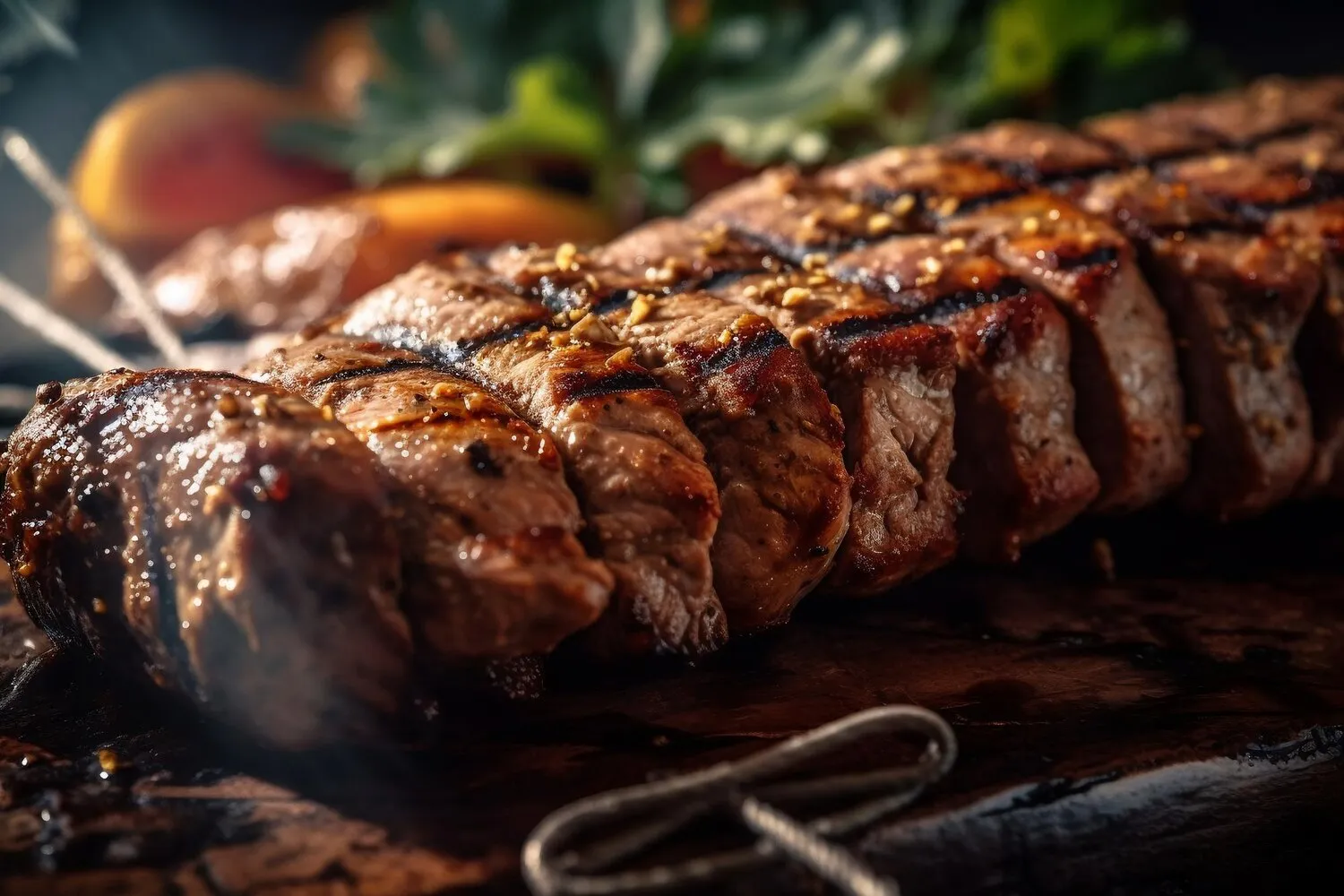
Bife Ancho
A classic Argentine steak cut, known for its rich marbling and flavor. Often served grilled.
Nutrition Facts
* The % Daily Value (DV) tells you how much a nutrient in a serving of food contributes to a daily diet. 2,000 calories a day is used for general nutrition advice.
Parrilla Del Carmem
Argentina's gaucho culture, dating back to the 18th century, heavily influences its cuisine. The abundance of cattle on the pampas (grasslands) made beef a central part of the diet. Simple cooking methods, like grilling over an open fire (asado), became traditional. Bife Ancho evolved as a prime cut appreciated for its rich flavor and tenderness, reflecting the focus on quality ingredients and straightforward preparation.
Bife Ancho is deeply intertwined with Argentine social culture, particularly gatherings centered around asados.
Asado Culture
Bife Ancho is a staple at asados, Argentine barbecues that are more than just a meal; they are social events involving family and friends. The asador (grill master) meticulously prepares and cooks the meat, often over several hours, while guests socialize and share stories.
National Pride
Argentines take immense pride in their beef. Bife Ancho, representing a premium cut, symbolizes the country's rich agricultural heritage and its reputation for producing some of the world's finest beef.
Simple Pleasures
The appreciation of Bife Ancho reflects a cultural emphasis on simple pleasures. The focus is on the quality of the ingredients and the sharing of a delicious meal with loved ones, rather than elaborate sauces or complex preparations.
Bife Ancho is characterized by its intensely beefy flavor, enhanced by rich marbling and a simple seasoning of salt.
The abundant intramuscular fat (marbling) melts during cooking, basting the steak from within and contributing to its succulent texture and profound flavor. The flavor is pure beef, often described as nutty and slightly sweet. The minimal seasoning, typically coarse salt, allows the natural taste of the high-quality beef to shine. When grilled, the Maillard reaction creates a savory crust that adds another layer of complexity.
Choosing the Right Cut
Look for Bife Ancho with generous, even marbling throughout the steak. This is key to its flavor and juiciness. A good thickness (at least 1.5 inches) will help retain moisture during cooking.
Salting Technique
Generously salt the Bife Ancho at least 30 minutes before grilling, or even better, the day before (dry brining). This allows the salt to penetrate the meat and enhance its natural flavors.
Grilling Temperature
Use high heat to sear the outside of the steak, creating a flavorful crust. Then, move the steak to a cooler part of the grill to finish cooking to your desired level of doneness (ideally medium-rare or medium).
Resting Period
Allow the Bife Ancho to rest for at least 10 minutes after grilling before slicing. This allows the juices to redistribute throughout the steak, resulting in a more tender and flavorful bite.
Explore additional Grilled meat dishes and restaurants
Explore Grilled meatDiscover top dining spots and culinary experiences in Santo André.
Explore Santo AndréLearn more about the food culture, restaurant scene, and culinary heritage of Brazil.
Explore Brazil
